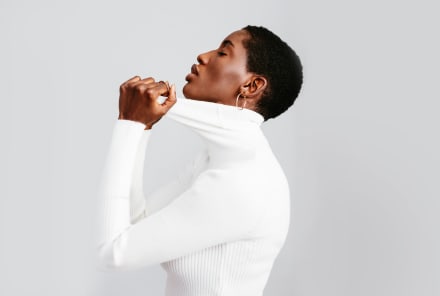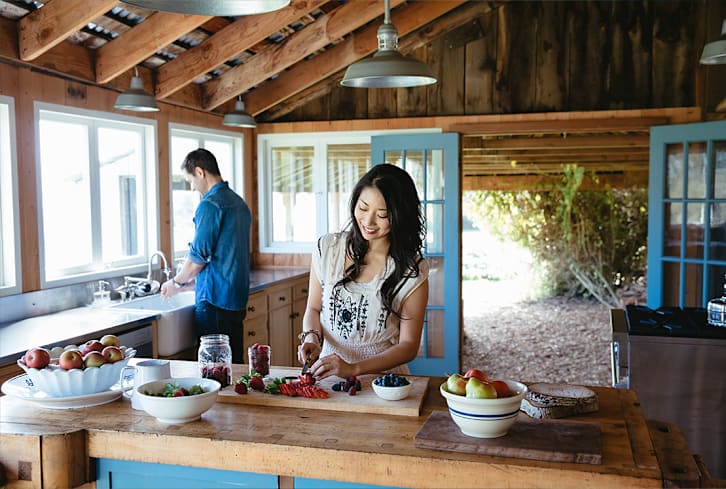Advertisement
Are Menstrual Cups Really For Every Body? An Educator Weighs In


Menstrual cups, discs, and underwear now grace shelves and social media feeds worldwide—often packaged in beautiful branding with well-curated messages that, depending on the time of the month, fall right on cue.
With so many new brands out there, sifting through reusable period products has become an investigative process. Today, we're breaking down the evolution of reusable period products, the internet's impact on the industry, and how to find a product that fits your unique body.
The reusable period product evolution
Over the last five years, direct-to-consumer companies have stepped in to respond to those who are ditching tampons and pads for health and environmental reasons.
Long gone are the days when the only menstrual cup available was the DivaCup. Today, there are more diverse options available within the industry—even on shelves at big-box retailers like Target and Walmart. Valued at $785.13 million in 2022, the menstrual cup market is on track to surpass $1 billion by 2030.
What was once a very alternative, niche product has now become a frequently stocked item from 200 FDA-registered brands. Digital marketing has allowed direct-to-consumer brands to soar even further.
"Ten years ago, the response [to menstrual cups] was horrible," recalls Kim Rosas, a menstrual cup educator and the founder of Period.Nirvana and Period.Shop, an online menstrual cup marketplace. "I think the trend increased because periods have been discussed and broken down more—so more people are open to trying a menstrual cup or disc."
There are plenty of reasons to do so: Menstrual cups and discs can last from five to 10 years, compared to tampons and pads that need to be tossed after one use. They are also often made from medical-grade silicon, which doesn't have fillers, doesn't disrupt hormones, and is biocompatible (meaning, it doesn't leach chemicals onto incredibly porous vaginal skin).
Find the right product for your body
With so many options out there, the challenge becomes finding a product that's the right size for your body. Most cups are advertised as either average in cervix length or longer, and, as Rosas says, "A cup that doesn't fit you internally is never going to work."
If you've experienced pain with a cup before, it could very well be because you have a high cervix. During the day, reusable cups ride up due to muscle contractions and physical movement. This can cause the cup to travel up too high, sending your body into fight-or-flight mode. "You know it can't be lost, but your body doesn't have logic the same way your mind does—so it tenses up," Rosas says. This is why choosing the right size for your body is so important. "It's good to know what you're getting into before you waste money or before you get into one of those really fearful experiences," Rosas says.
Your cervix height varies depending on the time of the month, so to find out your ideal size, Rosas recommends measuring your cervix during your period—specifically the first and last day—and taking note of the lowest number. Take a finger to measure inside your vagina opening, up until you touch your cervix—it feels like the tip of your nose.
If you have a hard time finding it, chances are you have a high cervix. If your finger finds your cervix, purchasing a cup that's shorter than the length measured will provide the most comfort. Low cervix options are available in-store too.
Those with a low cervix may also find success with a disc rather than a cup. Menstrual discs are suction-free and easy to remove, however, "if you're coming from a tampon with an applicator, it can be really messy. It's a huge change in terms of your fingers going into your vagina," Rosas says.
If you aren't open to self-measurement, chat with your OB/GYN about cervix height on your next visit. They can help provide a ballpark measurement, pointing you to where your cervix falls on the spectrum of "low" to "super high.""
More tips for purchasing a reusable period product
Once you have an idea of the product size you need, these tips can help you find your perfect fit:
Ask if a menstrual cup or disc is going to work for your lifestyle.
While most people will be able to get the hang of using menstrual cups and discs with practice, Rosas notes that there are certain disabilities that make them harder to insert or remove. If that's the case for you, Rosas recommends cloth pads or reusable period underwear as alternatives that are still more eco-friendly than single-use period products.
Look for brands with a good reputation, not just good branding.
Look out for companies that have positive reviews and sell their products at a fair price.
The menstrual product industry is full of white-label companies that sell generic designs for cheap on TikTok, Instagram, and Amazon. But high-quality menstrual cups and discs should be more expensive than a pack of tampons or pads. "I won't say no one who starts a white label company cares about their customers or safety—but generally speaking, it's usually more about a profit than being part of a bigger conversation about period health or environmental issues," says Rosas.
Check out her database of reputable, ethical, inclusive brands around the world and mindbodygreen's roundup of the best cups for every body for a list of vetted high-quality products. They may cost more, but chances are they'll suit your body better and last you longer. Utilizing your health insurance can also help bring costs down—reusable period products are HSA- and FSA-eligible!
Figure out your preferences when it comes to blood.
A disc may work better for some people because they're suction free, which allows for easier removal. However, it also involves more contact with your body than a cup. This is something to consider when you're making the switch.
Keep the conversation going.
"The wrong [product] can lead to a poor experience. If you didn't know there were other options, you may never try again and swear them off forever," Rosas says. "The more [we] talk about it and get rid of the stigma, the easier it is for someone to say, 'Hmm, menstrual cup. What do you like?'"
The takeaway
The reusable period product industry has grown immensely over the last five years, and digital marketing has greatly impacted the amount of brands available. If you're curious about making the switch, be sure to look for products designed to fit different cervix lengths and lifestyle needs.
You body, your choice, your way. Period.


















